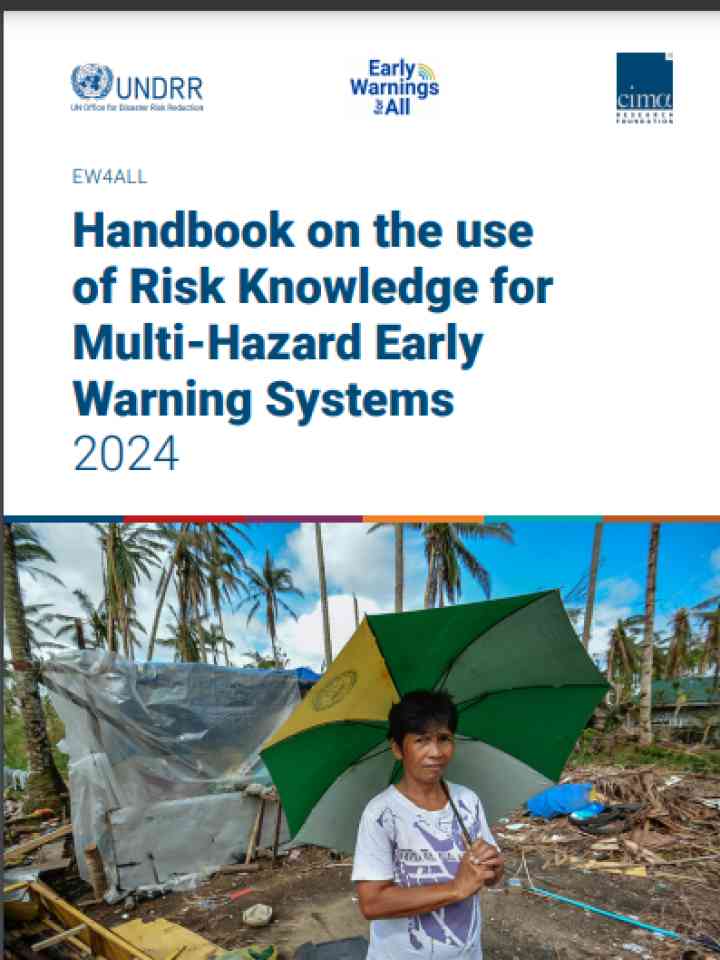Handbook on the use of risk knowledge for multi-hazard early warning systems 2024
The handbook supports the implementation of EW4All Pillar 1, which focuses on strengthening the use of risk knowledge globally. It serves as a practical guide for practitioners to incorporate targeted, contextual risk information—encompassing hazard, vulnerability, and exposure data—into every stage of the early warning system process. This ranges from risk-based forecasting, to defining communication channels, to setting triggers for anticipatory action.
Key takeaways from the handbook include:
- Integrating comprehensive risk information is essential for strengthening all aspects of early warning systems.
- Tailored and targeted warnings, based on detailed data about hazards, exposure, and vulnerable populations, increase their effectiveness.
- Effective early warning systems rely on multi-channel communication approaches to reach diverse audiences, particularly in underserved regions.
- Using risk data to define clear triggers for anticipatory action helps ensure timely and appropriate responses to emerging threats.
- Continuous community engagement, feedback mechanisms, and testing of communication systems are crucial for the ongoing improvement of early warning systems.

